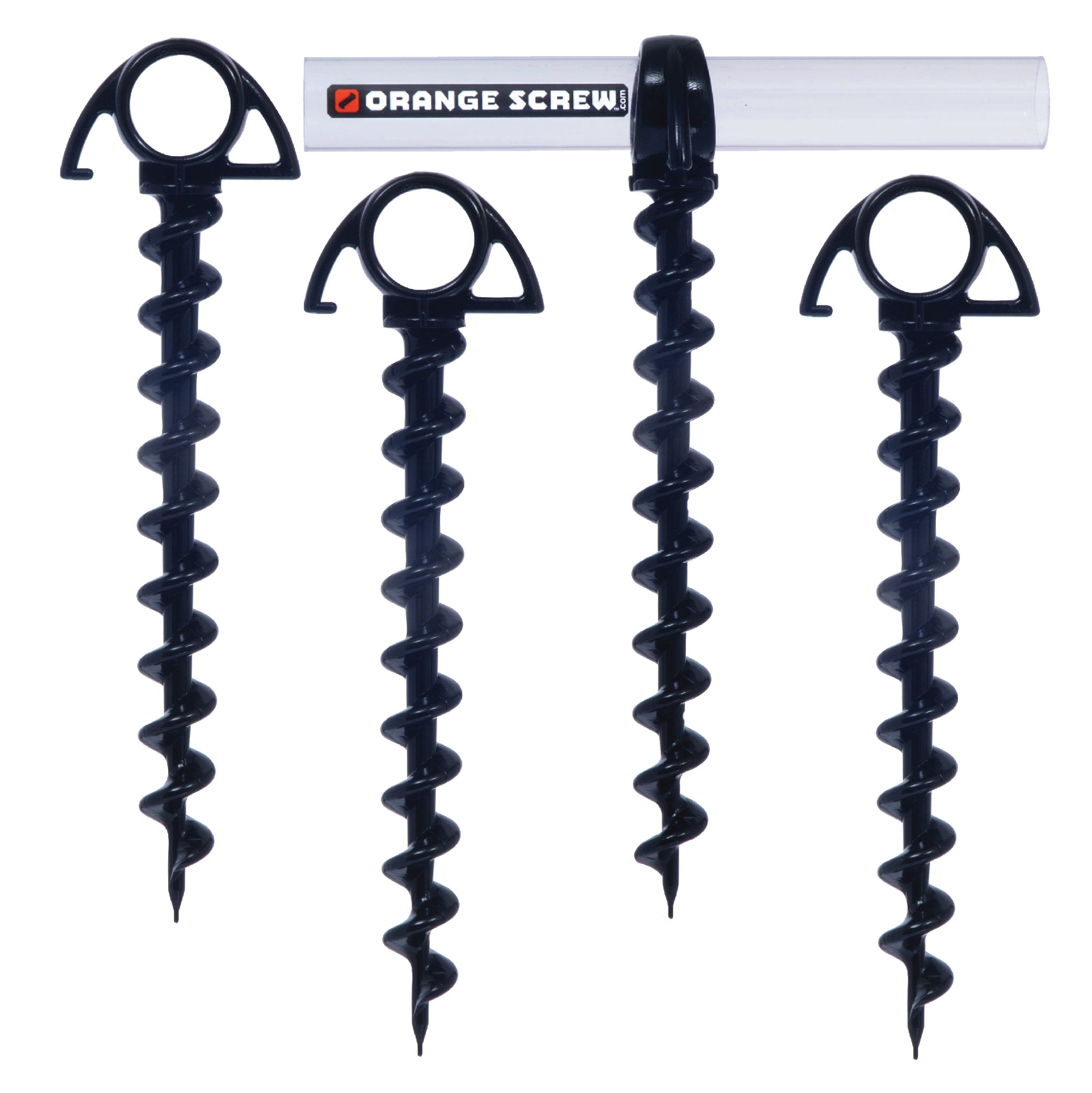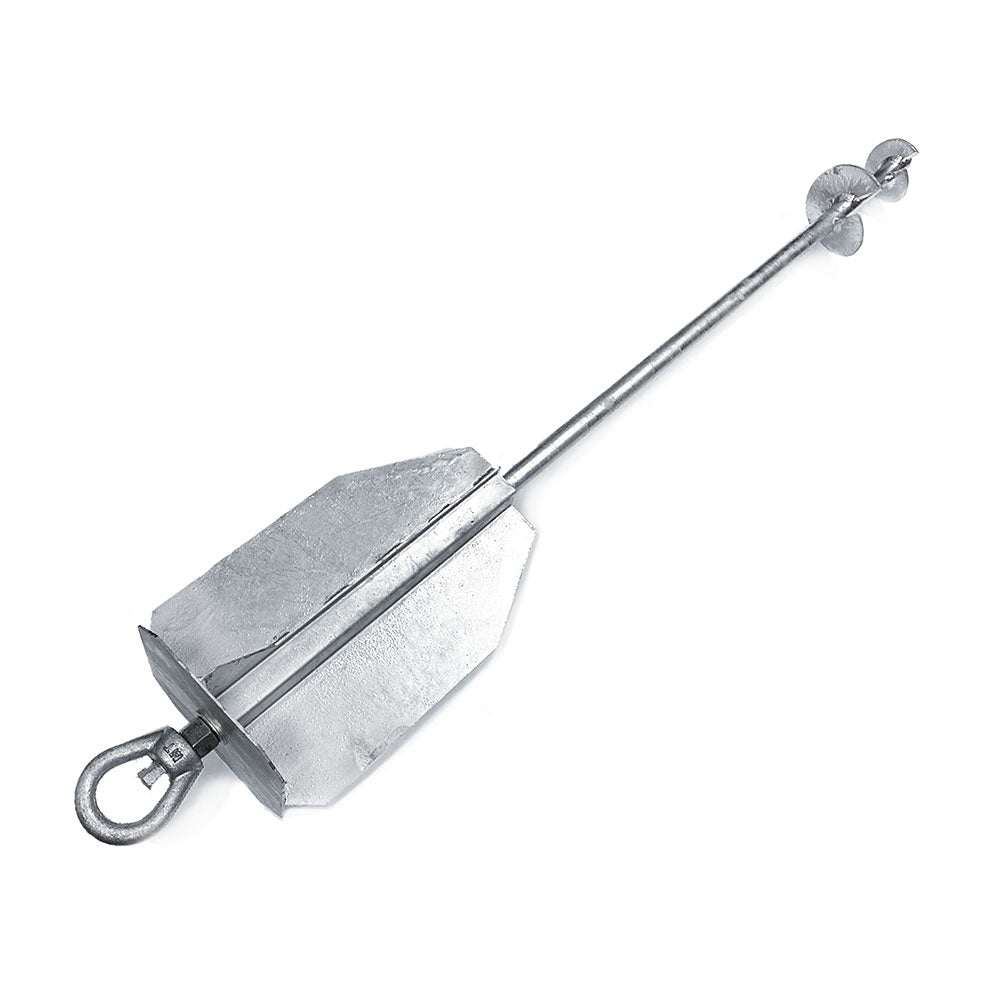How to Choose the Best Ground Anchor for Outdoor Use
How to Choose the Best Ground Anchor for Outdoor Use
Blog Article
Check Out the Different Kinds Of Ground Support for Your Next Task
From auger supports, which excel in varied dirt problems, to risk anchors designed for momentary installations, the choices are countless. Furthermore, concrete and screw anchors present unique advantages in details situations, while deadman supports are customized for applications calling for resistance to lateral forces.

Auger Anchors
Auger supports are a popular option in different building and construction and landscaping jobs due to their special design and reliable anchoring capabilities. These supports contain a helical screw-like shaft that is driven into the ground, enabling a secure and secure hold. The spiral design facilitates very easy installment and takes full advantage of resistance against side forces, making auger anchors particularly effective in applications such as fence, short-lived structures, and erosion control.
The installation process of auger supports is relatively uncomplicated. They can be manually or mechanically set up, depending upon the size and required depth. This flexibility enables their use in diverse soil conditions, from sandy to clayey surfaces. Additionally, auger anchors can be easily removed and reused, which includes in their cost-effectiveness and sustainability.
One of the considerable advantages of auger supports is their ability to distribute lots evenly throughout the surrounding soil, reducing the risk of soil disruption and decreasing ecological impact. In addition, they are much less prone to loosening up or heaving with time contrasted to typical securing approaches. Auger anchors are an outstanding option for projects requiring resilient and trustworthy anchoring remedies.

Risk Anchors
When it comes to protecting structures in a selection of exterior applications, stake anchors use a uncomplicated and trusted remedy. These supports are generally created from sturdy products such as steel or light weight aluminum, developed to hold up against ecological anxieties while giving optimal stability. Their easy layout enables quick installation, making them a perfect selection for short-term or irreversible anchoring needs.
Stake supports are especially useful in safeguarding camping tents, covers, and various other lightweight structures versus wind and climate. They operate by being driven into the ground at an angle, creating a strong hold that withstands pull-out pressures - Ground Anchor. The effectiveness of risk supports relies on numerous elements, consisting of dirt type, dampness content, and the angle of installment
For added safety, several risk anchors come with add-on points for straps or ropes, permitting stress adjustments as required. In applications such as landscaping or construction, they can effectively maintain devices or structures on unequal terrain. Generally, risk anchors supply a cost-efficient and functional option for safeguarding different outside installments, making them a preferred option for service providers and do it yourself lovers alike.
Concrete Anchors
Concrete anchors supply a durable solution for safeguarding structures to concrete surfaces, guaranteeing security and safety and security in various applications. These supports are essential for projects varying from domestic constructions to large industrial installations. They can be found in various types, consisting of growth anchors, glue supports, and undercut anchors, each developed for certain load check over here requirements and ecological problems.
When installed,Development anchors rely on mechanical mechanisms to hold the concrete. They are excellent for tool to durable applications. Glue anchors make use of high-strength epoxy or resin to bond the support to the concrete, offering exceptional load-bearing abilities, particularly in fractured concrete scenarios. Undercut anchors develop a special form within the concrete, giving exceptional holding power, especially in applications where tensile tons are widespread.
Selecting the suitable concrete anchor entails thinking about elements sites such as the weight of the tons, the problem of the concrete, and environmental problems. Proper setup strategies are vital to guarantee ideal efficiency and integrity. When carried out properly, concrete supports dramatically enhance the architectural stability of various jobs, making them vital in modern building practices. Understanding the particular requirements of your job will help in picking the right kind of concrete anchor for the task.
Screw Anchors

Screw supports are a versatile attaching remedy that can be successfully used in a range of applications where standard concrete anchors may not be adequate. have a peek at this website These supports contain a helical layout that permits them to be conveniently driven into the ground, making them perfect for usage in dirt and other substratums. Their one-of-a-kind structure provides outstanding holding power and resistance to pull-out forces, making them suitable for many projects, from landscape design to structural support.
One of the primary benefits of screw anchors is their ease of installation. They require very little devices and can often be installed without the demand for excavation, which conserves both time and labor expenses. In addition, screw anchors can be removed and reused, supplying a lasting option for momentary applications.
Screw anchors are especially beneficial in areas where dirt problems are challenging, such as sandy or loosened dirts. Their capacity to be mounted at differing depths enables customization based on details project demands. Overall, screw anchors offer a reputable and reliable securing technique, making them a superb selection for professionals and engineers looking for efficient services for their tasks.
Deadman Anchors
Deadman anchors work as a durable service for stabilizing frameworks in challenging problems, specifically where typical securing approaches might fall short. These anchors are composed of huge, hefty objects buried underground, which produce resistance versus lateral pressures. The layout usually involves a straight part, such as a block of concrete or a steel plate, buried in the soil, to which straps or cables are affixed.
The effectiveness of deadman anchors hinges on their capability to distribute lots over a larger location, lowering the danger of failure in unstable dirt problems. They are specifically valuable in applications such as maintaining walls, short-lived structures, and slope stablizing, where dirt motion can compromise the stability of the framework.
Installment of deadman anchors calls for careful preparation to ensure they are put at the appropriate depth and positioning, maximizing their load-bearing ability. While they may require more labor and product than light-weight supports, their reliability in damaging problems makes them invaluable for long-lasting projects. Furthermore, deadman anchors are versatile and can be adjusted to different applications, making them a go-to choice for engineers dealing with special challenges in their tasks.
Verdict
Auger supports succeed in diverse dirt conditions, while risk supports fit momentary applications. For concrete surface areas, expansion and sticky supports give reputable alternatives, and screw supports offer convenience in challenging surfaces.
In addition, concrete and screw anchors present special benefits in specific situations, while deadman anchors are tailored for applications requiring resistance to lateral pressures - Ground Anchor.Auger supports are a popular selection in various building and construction and landscaping projects due to their unique design and reliable securing capabilities. They come in different types, including expansion anchors, glue anchors, and undercut supports, each made for specific lots needs and environmental problems
Sticky anchors use high-strength epoxy or resin to bond the support to the concrete, using exceptional load-bearing capabilities, particularly in split concrete situations. On the whole, screw anchors supply a dependable and reliable securing method, making them an outstanding selection for specialists and designers looking for efficient solutions for their tasks.
Report this page